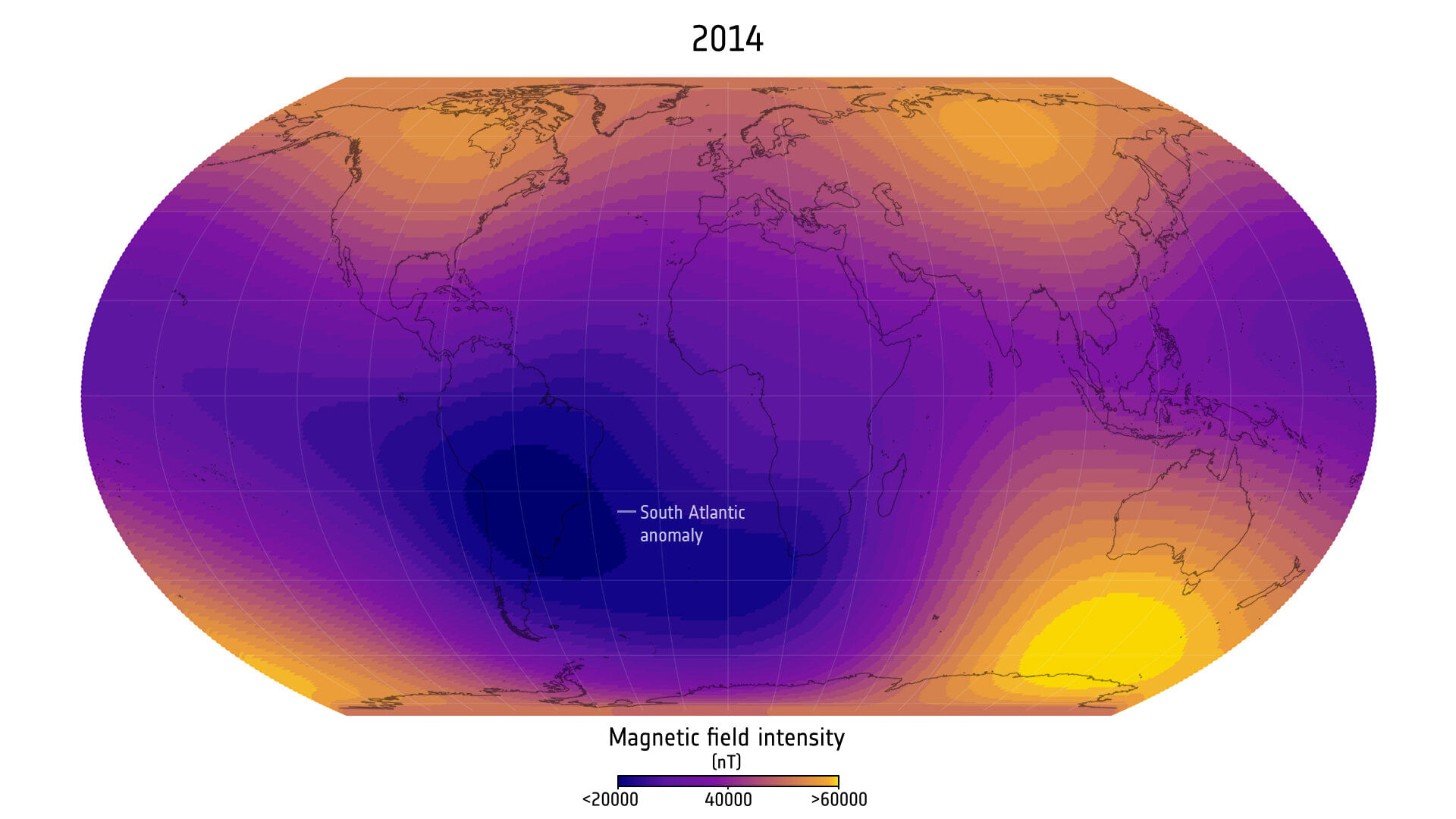New Delhi: The Swarm satellite constellation of the European Space Agency has discovered a weak spot in the magnetic field of the Earth known as the South Atlantic Anomaly is growing, and has tracked its growth since 2014, expanding by nearly half the size of continental Europe. This magnetic field of the Earth captures energetic particles from galactic sources as well as the Sun, protecting the life on Earth. The magnetic field is generated largely by the liquid outer core of the Earth, a churning ocean of iron and nickel, 3,000 km into the remote interior of the planet.
The outer core acts as a dynamo, generating electrical currents that generate the geomagnetic field of the Earth. The processes that contribute to the field are incredibly complex and not well-understood. The Swarm constellation is made up of three identical satellites that precisely measure the magnetic signals originating from the core, mantle, crust and oceans of the Earth, apart from the ionosphere and the magnetosphere. The Swarm satellites are revealing the different sources of magnetism to better understand the regions in which the magnetic field is weakening or strengthening. The weak field of the South Atlantic Anomaly was first identified in the 19th century.
Securing assets in Space
An improved understanding of the South Atlantic Anomaly is of particular interest when it comes to securing our assets in space. The satellites passing over the magnetic weak spot are exposed to higher doses of radiation, that can damage the sensitive electronic hardware. The asymmetric expansion of the weak spot is linked to strange patterns in the magnetic field of the core-mantle boundary known as reverse flux patches. These areas are moving westewards towards Africa. The researchers were able to improve the model of how the geomagnetic field of the Earth is produced because of the Swarm satellites.
